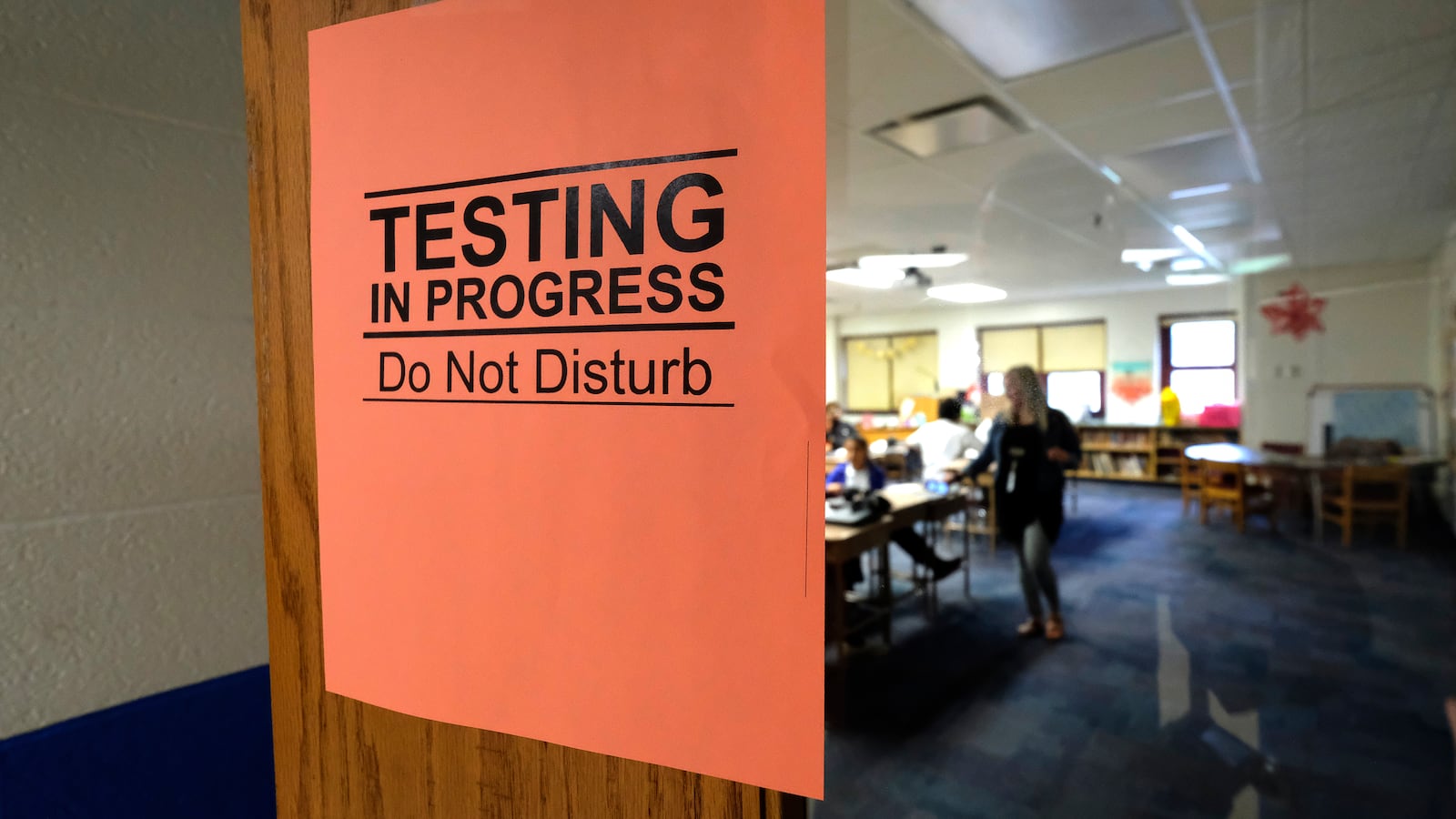Indiana’s history of problems with standardized testing did not end with its old ISTEP exam.
That was evident this week, when the governor and state superintendent of education called on legislators to pass a one-year “hold harmless” exception. Such legislation would protect teachers and schools from negative effects of scores on its new ILEARN test, administered in grades 3-8 for the first time this spring.
Standardized testing in Indiana has been called into question repeatedly over the past decade. ISTEP, which was given for 30 years through 2018 and is still being used in Indiana high schools, was plagued with technological issues. And now, following the transition to ILEARN, state test scores are said to be low in both English and math; those scores are set to be released publicly on Sept. 4, though schools received them earlier this month.
This time around, the decline isn’t the result of a technical glitch. School officials are attributing it in large part to ILEARN’s new computer-adaptive format and its introduction of some new content.
Federal law requires that states give yearly math and English/language arts exams to all students in grades 3-8 and high school. But the latest problems have undermined Indiana’s test as a measure of student, teacher, and school performance. They have also fueled debates about whether Indiana should place less significance on the results, which could impact teacher pay and the state A-F grades that schools receive.
Here are five other times in the past decade that Indiana ran into problems with its standardized test.
2011 and 2012
In 2011, about 10,000 students encountered technical problems taking ISTEP; the following year, 9,000 students had trouble taking the test online. CTB/McGraw Hill, which had a four-year, $95 million contract to create ISTEP, struggled to overcome the glitches.
2013
In April of 2013, about 500,000 Indiana students were taking ISTEP online when a large number of them were kicked offline and had to log back in repeatedly. For others, the screen just froze.
In all, about 16 percent of all Indiana students taking ISTEP, about 78,000 kids, experienced interruptions over the course of several days. As a result, school letter grades weren’t released until December. The state later settled with CTB for $3 million.
2015
In 2015 English/language arts and math scores plummeted after students were given test questions based on new, more rigorous academic standards. Scoring problems also delayed the release of results.
The guidelines CTB created for scoring didn’t recognize all of the possible correct answers students gave in response to the new technology-enhanced questions. New testing technology allowed students to get questions right in different ways, such as by manipulating graphs or writing equations.
The Indiana General Assembly passed “hold harmless” legislation in January 2016, which prevented schools that year from receiving A-F letter grades that year that were lower than the ones they received the year before. The state also ended up seeking $4 million in damages from CTB.
2018
While working with a new vendor, the British test-writing company Pearson, grading problems once again delayed results. More than 27,000 students who took the 10th-grade test had their scores increased after an issue was reported with the grading of a graphic question.
Another 115 students were affected by an issue matching some parts of test taken on paper to the correct student because of “incorrectly entered or messily written student data,” according to Pearson.
The state department of education said at the time it planned to seek damages for the delay.
Indiana’s two-year, $38 million contract with Pearson ended in 2018. To develop ILEARN, the state gave a three-year, $43.4 million contract to the nonprofit assessment and research company American Institutes for Research.

